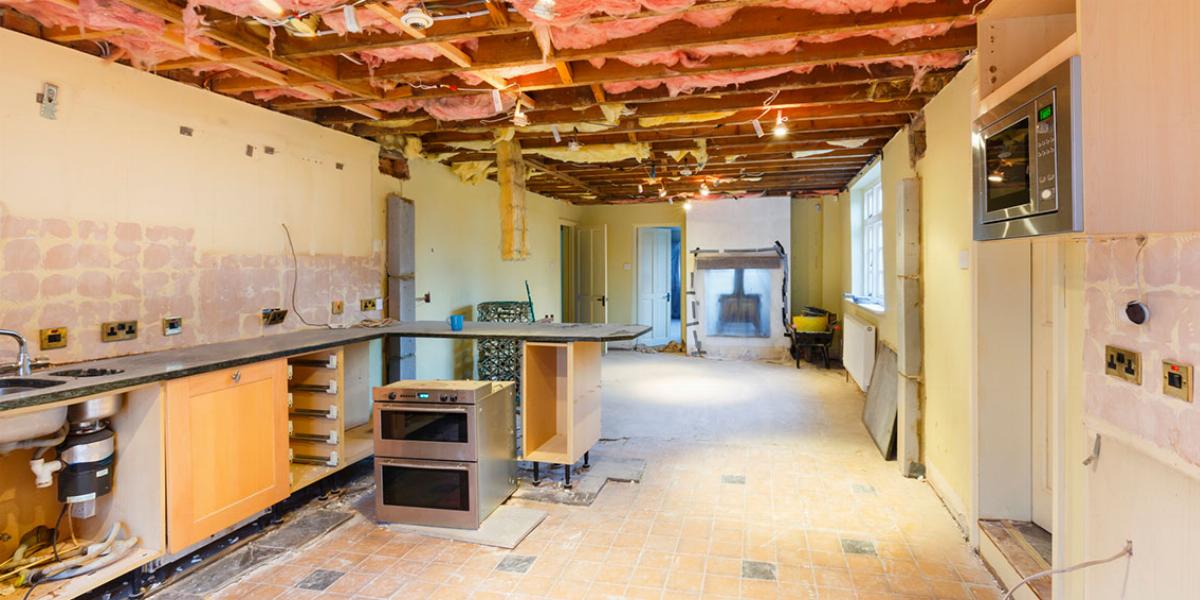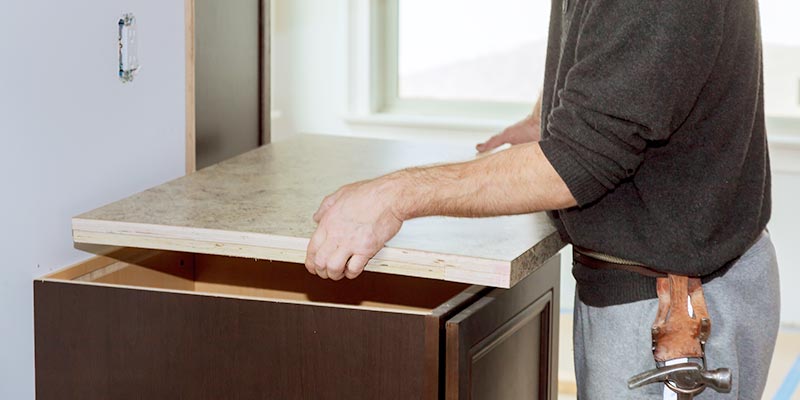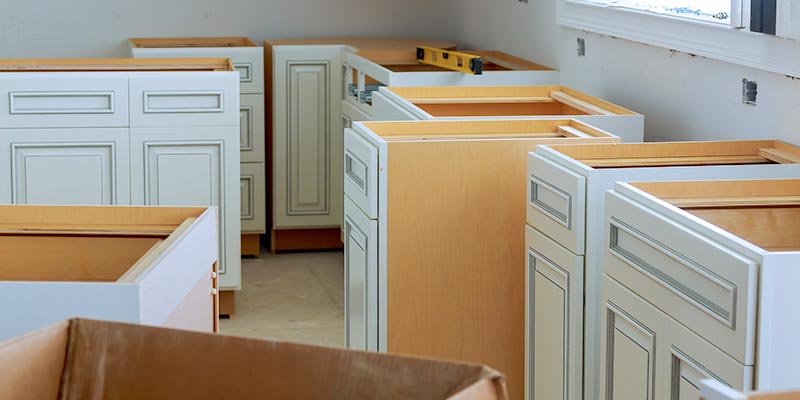
Starting to feel like the heart of your home is more Kitchen Nightmares than Martha Stewart? Creating your dream kitchen starts with getting rid of the less-dreamy stuff you’re currently stuck with.
Even if you’re hiring contractors to handle the remodel, making your kitchen demolition a DIY job is a great way to keep more money in your project budget. And just about any homeowner can do it. The job doesn’t require any specialized skills and you probably already own all the tools you need. Read on to learn how to demo a kitchen yourself.
Hiring professionals for your kitchen demolition costs between $500 and $750 on average. But that number can easily run as high as $1000 if you have a large kitchen or are demolishing down to the studs.
For a DIYer, assuming you’ve got a basic tool box on hand, the only expense is debris removal (we’ll talk more about this in the prep stage below). This means gutting your kitchen yourself can save hundreds in your remodel budget.
Before you get to work, rent a home dumpster to clean up as you go. Between your appliances, cabinets, countertops, flooring and backsplash, gutting a kitchen will leave you with plenty of debris that your trash service won’t take at the curb. So, if you’re not up for hauling it to the dump yourself, a dumpster is the best solution.
Pro-Tip: We typically recommend a 20 yard dumpster for home remodels, but our team can help you decide the best fit for your particular project.
Box up dishes, cookware, dish cloths and anything else you plan to re-home in your brand-new kitchen. Store them in another room where there’s no danger of being damaged when the hammers start swinging. This step also gives you the perfect opportunity to declutter and get organized.
It’s not safe to demo a kitchen while the utilities are still on.
Turn off power to the kitchen by flipping the appropriate switch in your breaker box. There’s usually a circuit map showing which switch controls the kitchen, but if not, just use trial-and-error.
If there aren’t knobs or levers under your sink, you can follow the lines into your basement or shut off water to the whole house at your main supply valve. This is usually located either in your garage or near your front water hose.
Pro Tip: If you have a countertop range or wall oven, you can usually find the valves to shut off their gas supply in the cabinets below. However, in older homes, these valves may not be in your kitchen. If you can’t find them, call your gas company to shut them off.
If you’re upgrading to new models, you can toss them in your dumpster or check out our appliance disposal guide for other options, including the best places to donate them if they’re in good condition.
Store any appliances you plan to keep somewhere they won’t be in the way when demolition work begins.
Important Safety Tip: Never remove a stove without shutting off the gas first. You risk starting a fire or even causing an explosion.
Demolition is a big job, but it doesn’t take many tools. Here’s what you’ll need:
|
|
Now that you prepped your kitchen for demolition, let’s get down to business. Here’s how to gut your kitchen like a pro.
Get your kitchen demolition underway by tearing out your existing countertops.
Tools for this step:
Pro-Tip: Due to their weight, you should hire a pro to remove natural stone counters like granite or quartz. If a tile counter is too heavy to lift, chip away the tile with your chisel to lighten the load.
Get a more detailed walk-through of this step in our How-To Guide to Countertop Removal
With the countertops gone, it’s time to get rid of their base.
Tools for this step:
Get a more detailed walk-through of the lower cabinet removal process in our How-To Remove Cabinets guide
This is the part of gutting a kitchen where you’ll need the most helpers on hand. It’s not difficult, but you’ll need to work slowly and carefully to make sure no one gets hurt.
Tools for this step:
Get a more detailed walk-through of the upper cabinet removal process in our How-To Remove Cabinets guide
Time to finish up the last bit of wall work.
Tools for this step:
Pro-Tip: If you have old sheets or blankets you don’t want anymore, you can save money by using them as your drop cloths.
You’re in the home stretch! Removing vinyl or linoleum flooring is the only step in the kitchen demolition process where you may need to rent a few tools.
If your kitchen floor isn’t vinyl, use these tips for removing tile.
Before you get to work be aware: if your new floor will also be vinyl or linoleum, you can simply install it over the existing layer. But if you’re going for something totally new, you’ve got a little more work to do.
Tools for this step:
*If necessary.
Important Safety Tip: If your vinyl floor was installed before 1986, test it for asbestos. If it’s present, stop your flooring demo and call in an asbestos abatement contractor for safe removal.
Pro-Tip: If there’s a wood floor under your linoleum you’re hoping to refinish, hire a professional to remove the linoleum to avoid damaging the wood with heat or moisture.
Now that you’ve done the hard work of demolishing your kitchen, it’s time to prep for a trend-setting remodel worthy of your favorite cooking show. With the money you saved gutting it yourself, you may just be able to splurge on snazzier countertops or buy that energy efficient refrigerator you’ve always wanted.
Not sure how to keep your household running without a working kitchen? Check out our advice for living through a major remodel.




